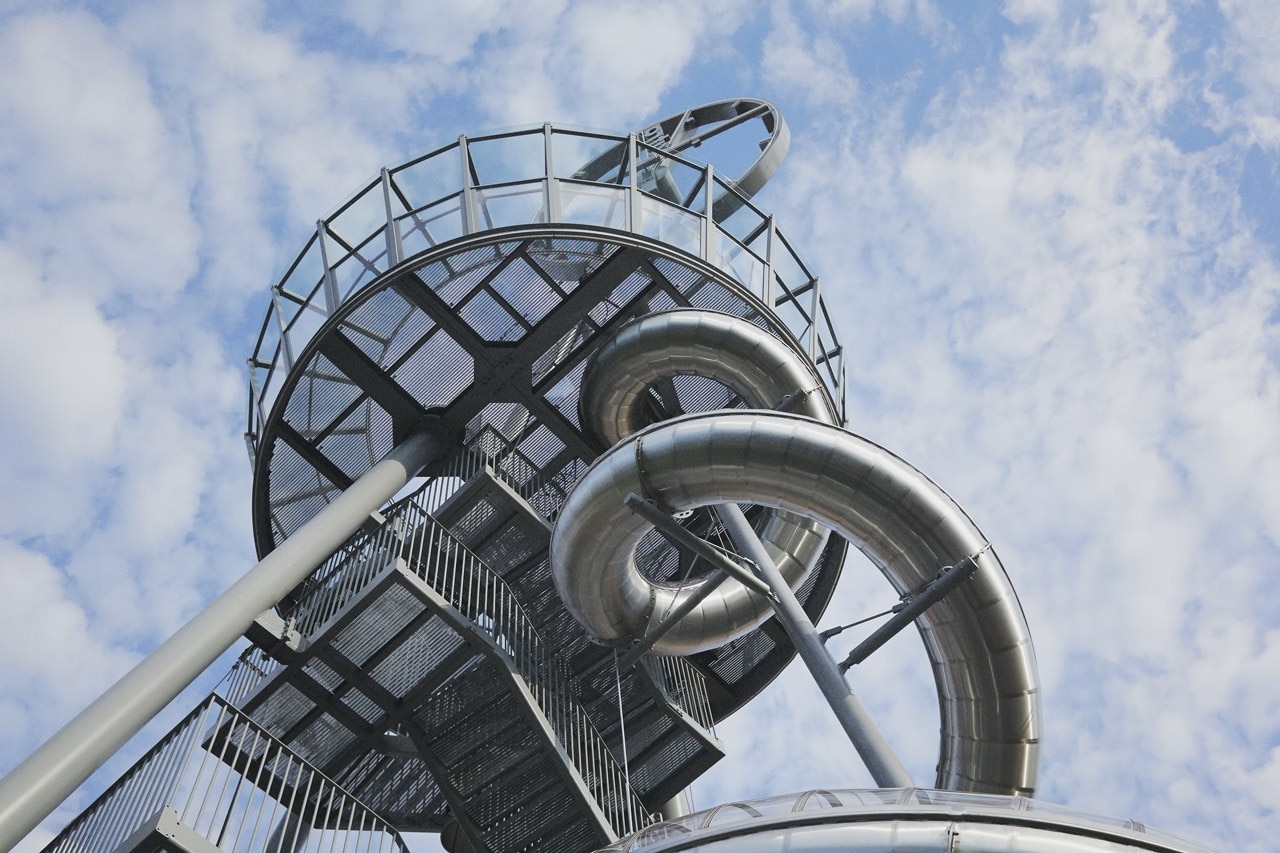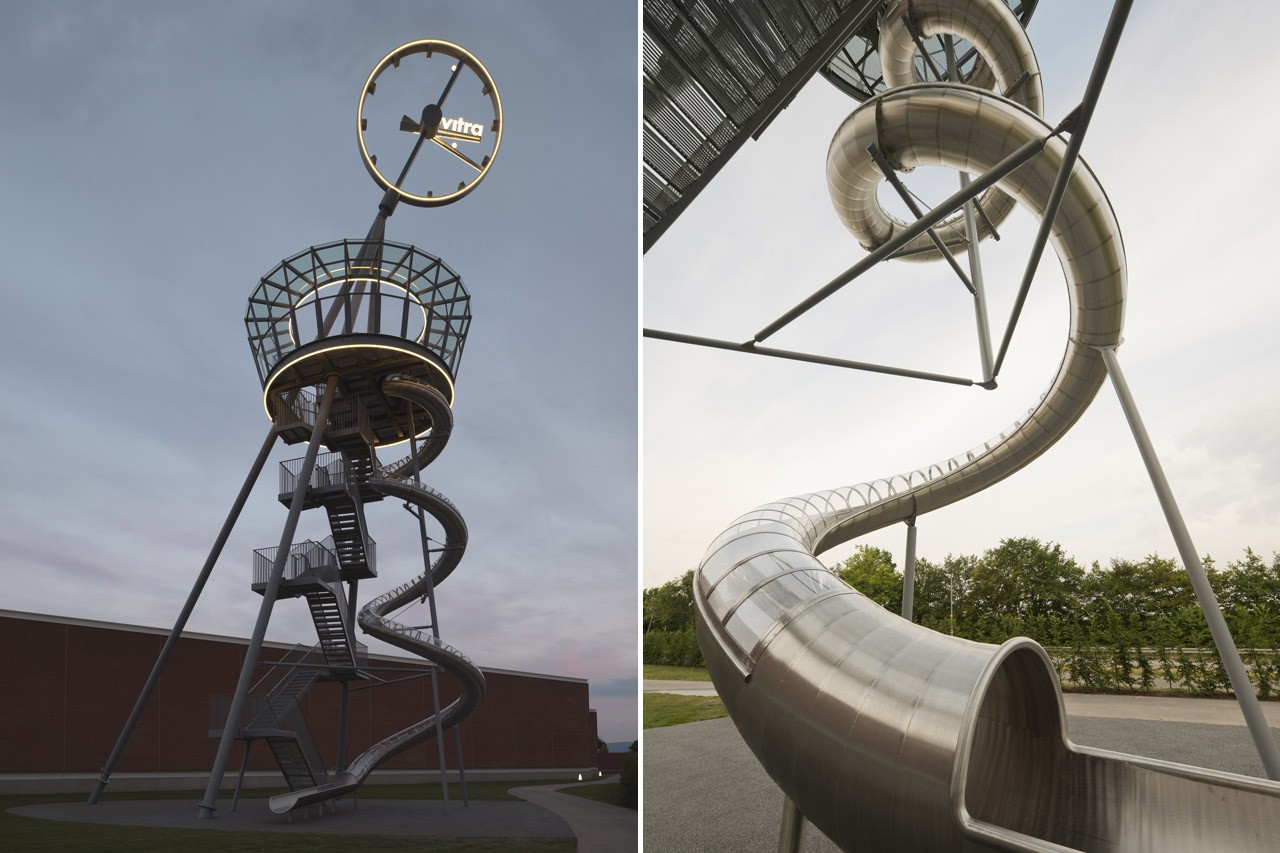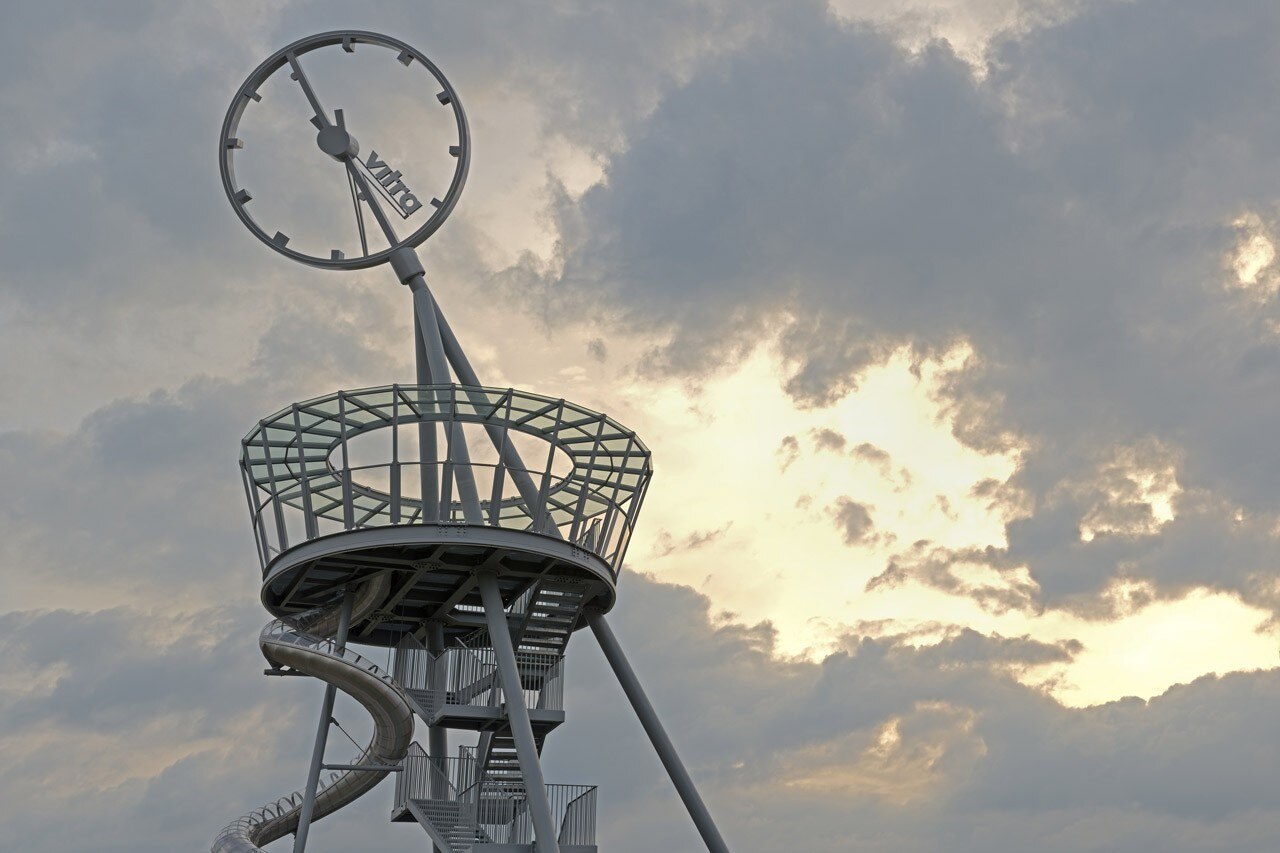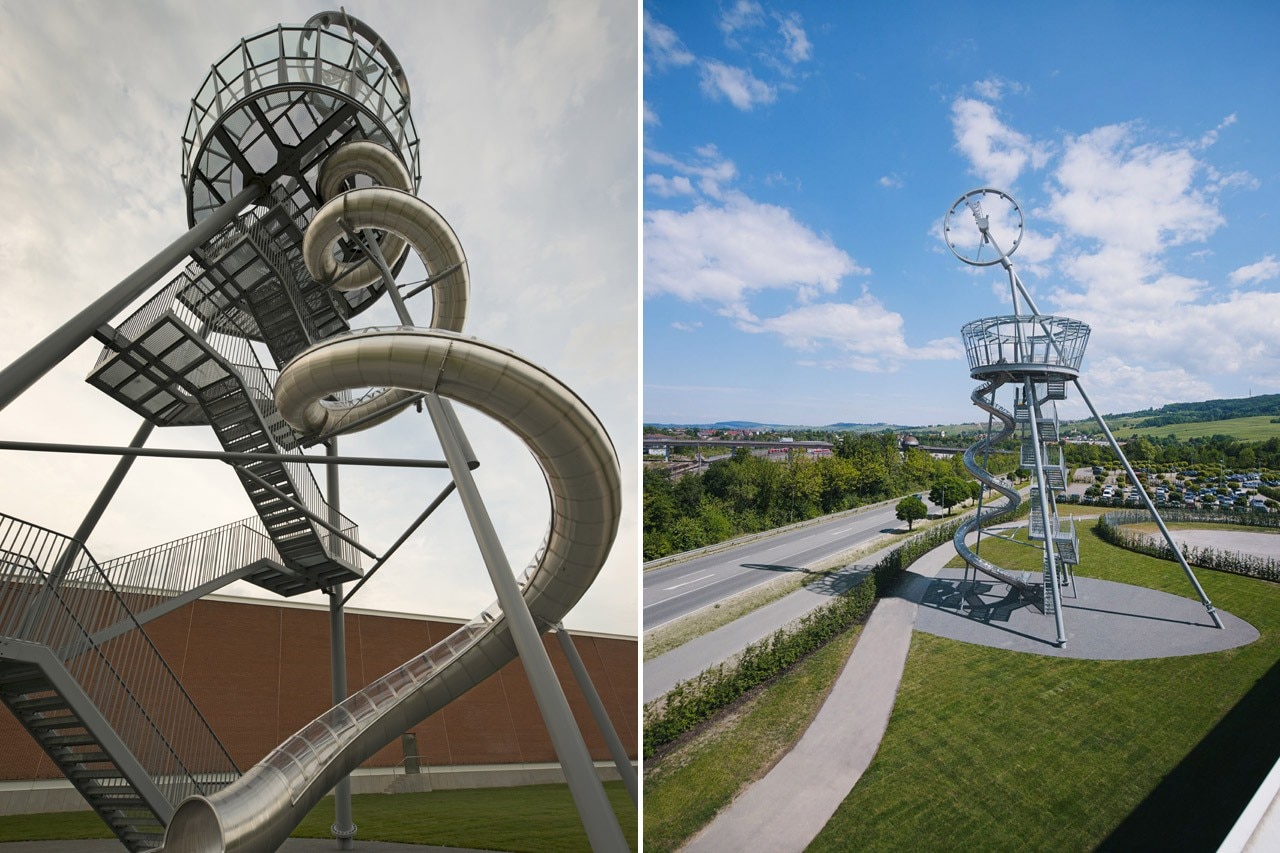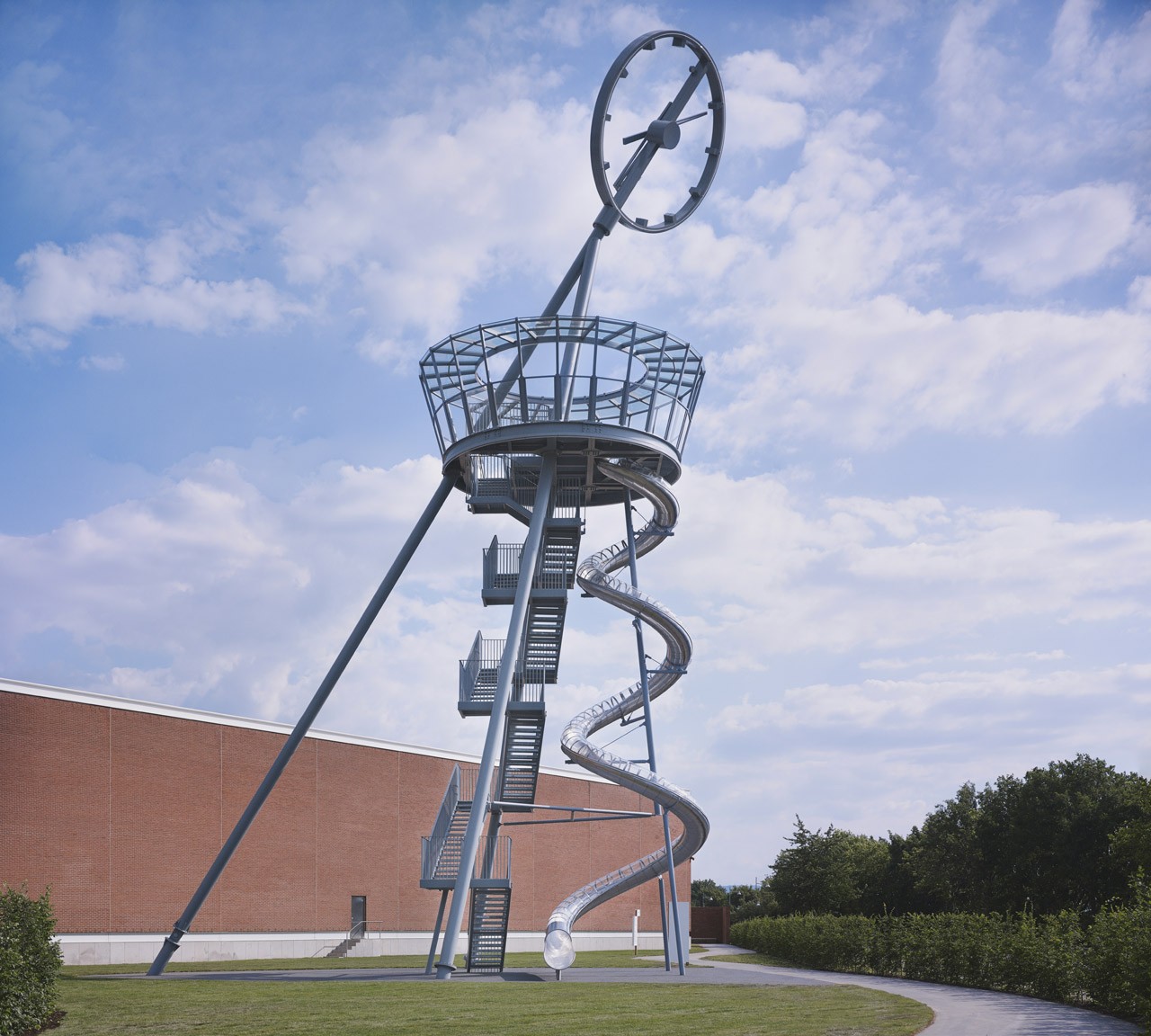
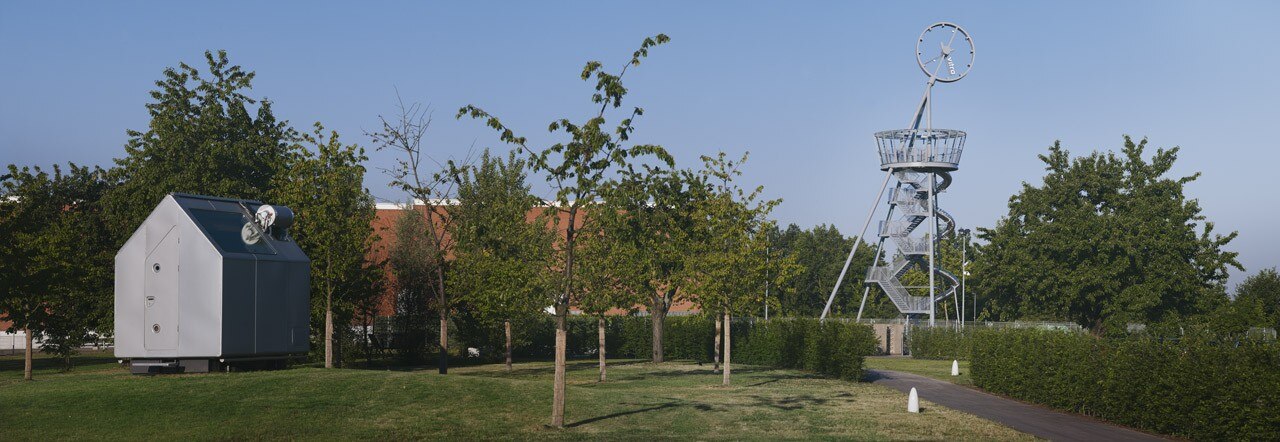
Slides are a specific element in Höller’s work. In 2006, he constructed the giant slide installation Test Site in the Turbine Hall of Tate Modern in London.
In earlier works, Höller investigated the question of happiness; he constructed carrousels to provide a tangible experience of the sensation of flying; walls of light confound the sense of space; reverse vision glasses make the world appear inverted (1994–2009); and with the Phi phenomenon (1994) he provokes sensory illusions. In such ways, Höller undermines accustomed forms of perception, calling on the participation of the viewer with his experimental set-ups and creating opportunities for self-experimentation. Höller’s installations are sculptures of discovery. They offer the possibility of inner experiments leading to the exploration of self. In this concept of the experiment, Höller the scientist remains present.
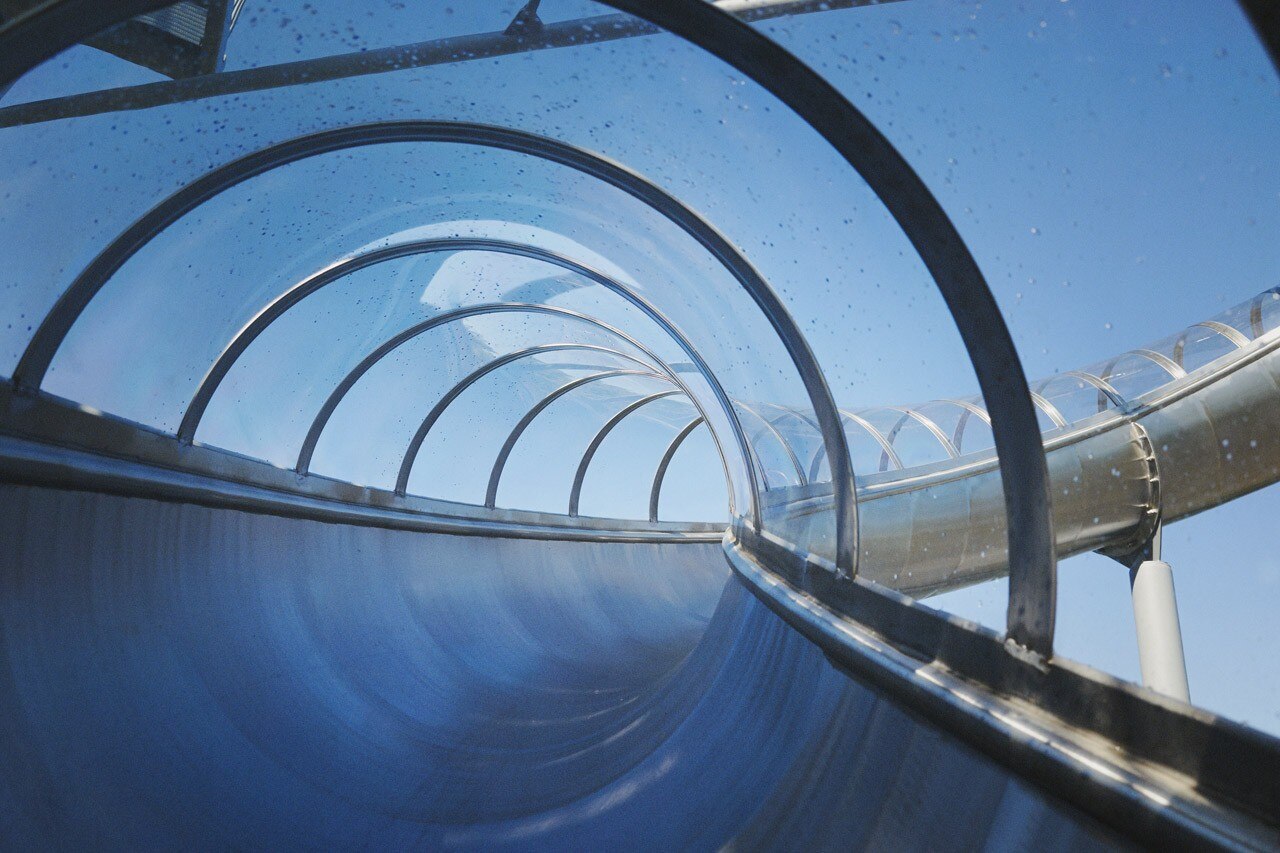
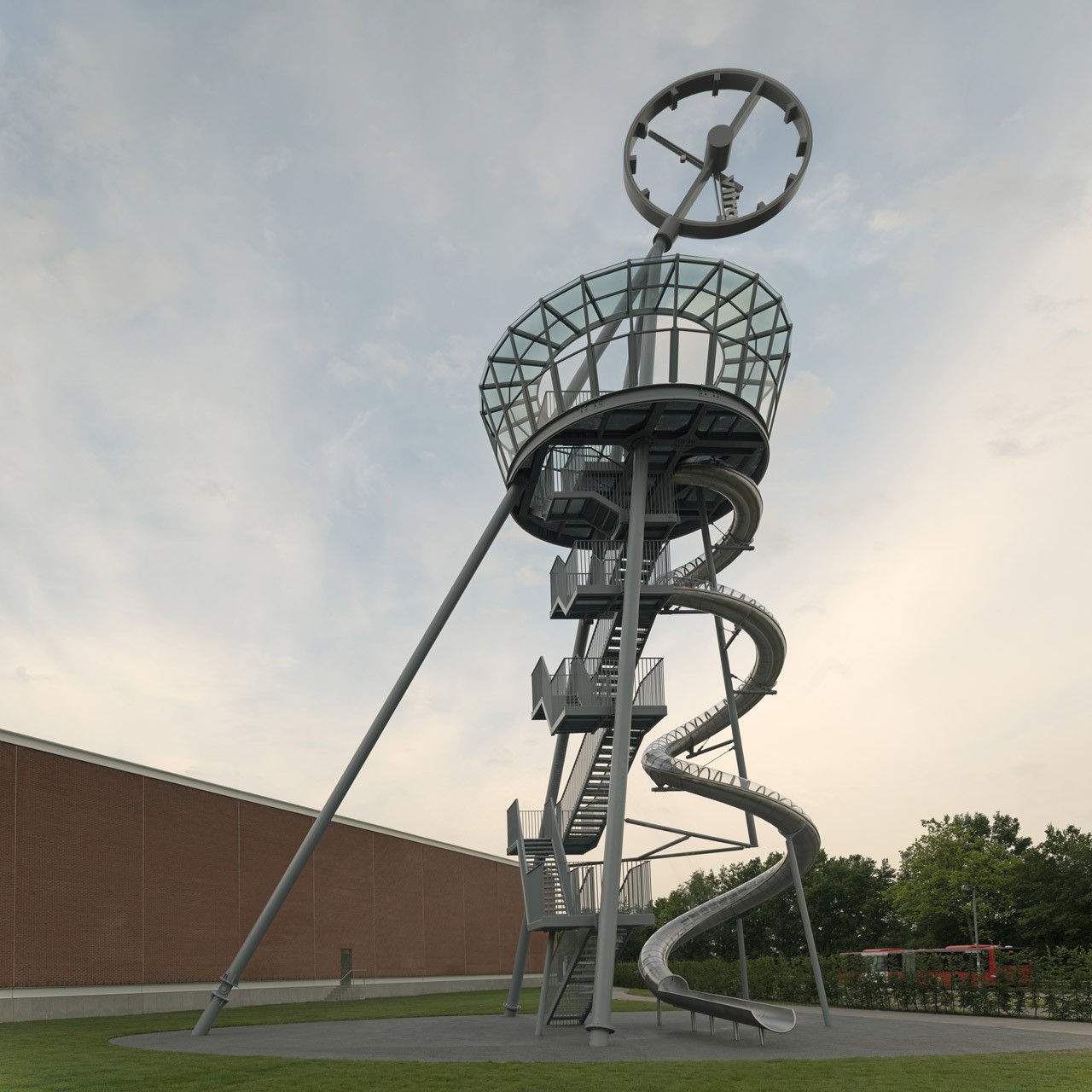
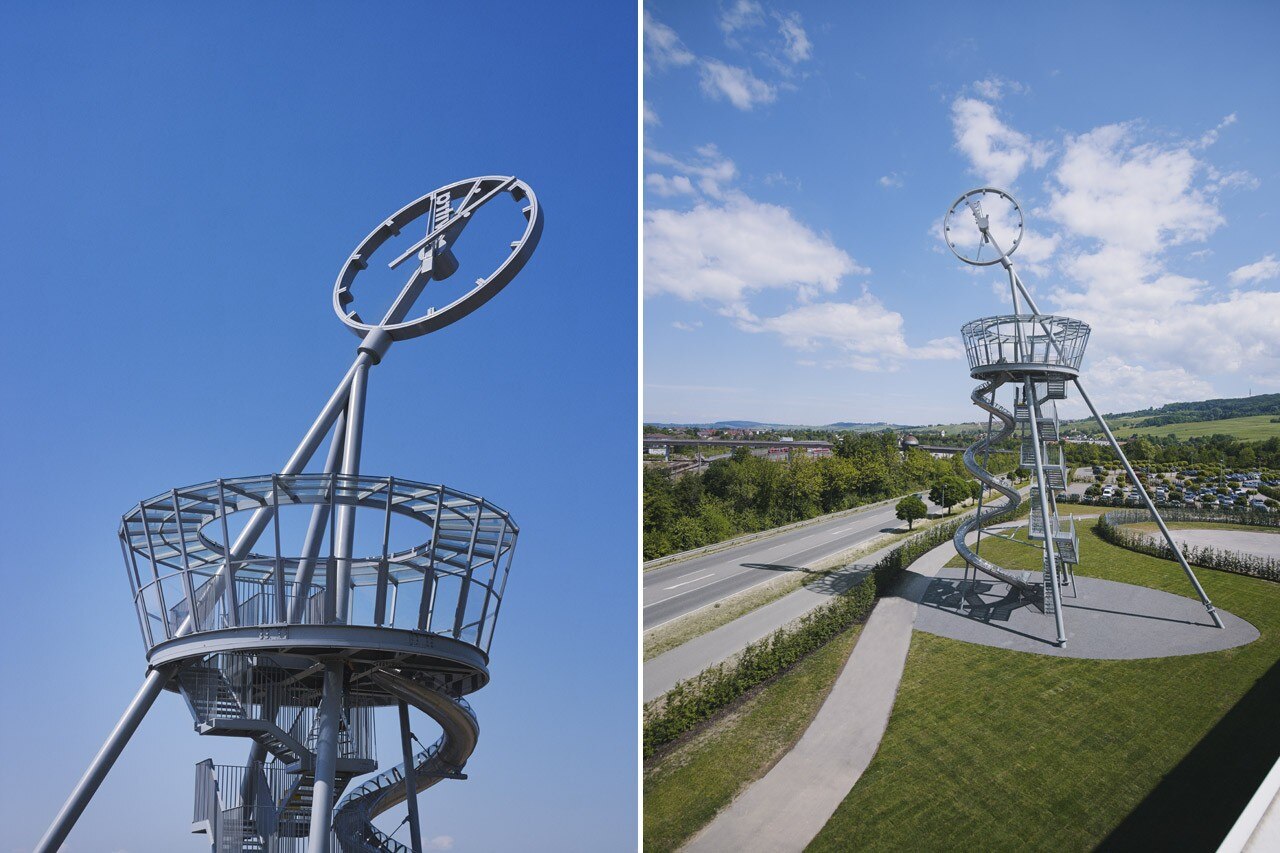
Vitra Slide Tower, Weil am Rhein, Germany
Program: viewing tower
Design: Carsten Höller


